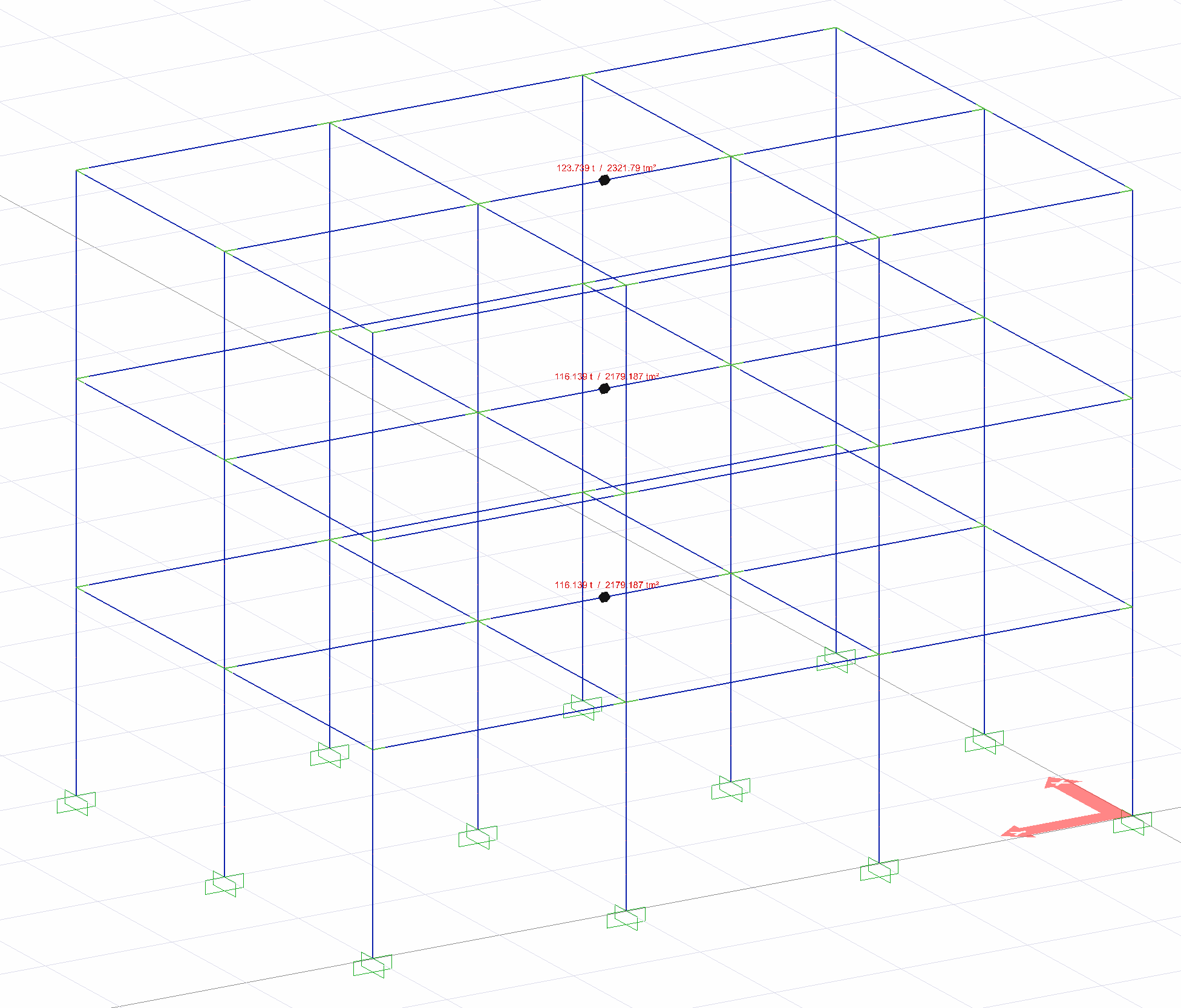15.4.6
In the performance analysis of existing buildings , when the linear performance analysis specified in TBDY 15.5 is applied, a fully rigid diaphragm is assumed. In addition , according to TBDY 15.4.6, additional eccentricity is not applied.
The earthquake calculation is under the control of the user according to the acceptance of full rigid diaphragm or semi-rigid ripple.
Linear performance analysis is done automatically according to the acceptance of a fully rigid diaphragm.
In the performance analysis made according to the acceptance of a fully rigid diaphragm, the degrees of freedom are automatically defined to the floor mass center.
Additional eccentricity is not applied.
In buildings where floors do not work as rigid diaphragms in the horizontal plane, all degrees of freedom of slabs and bars are taken into consideration.
ICONS
UX = The displacement of the
joint point in the (X) direction in thethree-dimensional analysis model UY = Thetranslation of the joint point in the (Y) direction in thethree-dimensional analysis model
UZ = Thetranslation of the joint point in the (Z) direction in thethree-dimensional analysis model
RX = Rotation of the (X) axis
RY = Rotation of the joint point around the (Y) axis in thethree dimensional analysis model
RZ = Therotation of the joint point around the (Z) axis in the three dimensional analysis model
While determining the earthquake performance of existing structures, in buildings where stories operate as a rigid diaphragm in the horizontal plane , the masses are concentrated in the center of mass of each story. The degrees of hardness to be taken as basis in earthquake calculations are defined as (X) and (Y) at each story as a good horizontal displacement and rotation around the vertical axis (torsion). Additional eccentricity is not applied in earthquake calculation. The image below shows the masses concentrated to the story mass center.

When determining the earthquake performance of existing structures, when earthquake calculation is applied with the linear method specified in Section 15.5 , full rigid diaphragm acceptance is applied.
When considering the degrees of freedom, (X) and (Y) at each story are considered as a good horizontal displacement and rotation around the vertical axis (torsion). Besides, with the privilege of three-dimensional modeling technique, in addition to the above degrees of freedom, displacement in (Z) direction and freedom of rotation around (X) and (Y) horizontal axes can be taken into account. The following illustration shows the dynamic degrees of freedom options.

Next Topic
